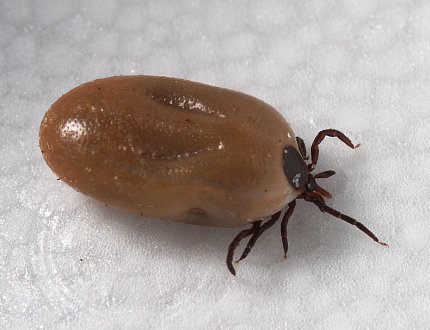Tick Genome Reveals Secrets of a Successful Bloodsucker

Photo: CDC
With tenacity befitting their subject, an international team of nearly 100 researchers toiled for a decade and overcame tough technical challenges to decipher the genome of the blacklegged tick (Ixodes scapularis).
The National Institute of Allergy and Infectious Diseases contributed primary support to the research, which appeared in the online journal Nature Communications.
“Ticks spread more different kinds of infectious microbes to people and animals than any other arthropod group,” said NIAID director Dr. Anthony Fauci. “The spiral-shaped bacterium that causes Lyme disease is perhaps the best known microbe transmitted by ticks; however, ticks also transmit infectious agents that cause human babesiosis, anaplasmosis, tick-borne encephalitis and other diseases. The newly assembled genome provides insight into what makes ticks such effective disease vectors and may generate new ways to lessen their impact on human and animal health.”
The researchers’ focus was a creature that is extremely difficult to maintain and that lives a long time—up to 2 years in the wild and 9 months in the lab.
Another challenge was the sheer size of the tick genome—some 2.1 billion DNA base pairs—and expansive regions where sequences are repeated.
“The genome gives us a code book to the inner workings of ticks. With it, we can now begin to hack their system and write a counter-script against them,” said Dr. Catherine A. Hill of Purdue University, who headed the team of investigators.
Hill admits to a grudging admiration for her 8-legged subjects. “I find them almost endearing in the way they stick so firmly to the business of parasitizing their hosts. They are persistent and resilient. In a way, our team took a page from the tick’s book in working together over so many years until we achieved our goal.”
